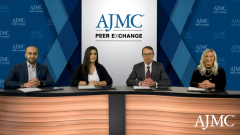
Payer Considerations in Treatment of RRMM
A panel of multiple myeloma experts discuss costs associated with relapsed/refractory disease.
Episodes in this series

Jeffrey Matous, MD: Zahra, can you touch on intravenous gamma globulin infusions? What’s its role? There’s no correct answer. You can say anything you want.
Zahra Mahmoudjafari, PharmD, MBA, BCOP, FHOPA: I think it depends on the provider and how aggressive or conservative they choose to be. But IVIG [intravenous immunoglobulin], depending on the regimen that the patient has received, has a role depending on the IgG [immunoglobulin G] levels of the patient, and again, how aggressive our providers want to be. We can talk about this in the setting of bispecifics. We’re seeing some increased reactions post-IVIG and the patients that are receiving some bispecific antibodies and post-CAR [chimeric antigen receptor] T cell therapy as well. I may not be answering the question.
Beth Faiman, PhD, APN-BC, CM: But you’re giving us good information.
Zahra Mahmoudjafari, PharmD, MBA, BCOP, FHOPA: But it’s something interesting that we’re seeing, so we’re trying to figure out the rationale behind that. There is definitely a role for gamma globulin in some patients but again, I think Kirollos did a really great job talking through all of the supportive care that we provide patients. It’s just very cumbersome from an education standpoint.
Jeffrey Matous, MD: As we think about wrapping up this session, I have a question from my panelists which was is there any education to be done for our payers when we’re addressing the treatment of relapsed/refractory multiple myeloma?
Beth Faiman, PhD, APN-BC, CM: I think in my opinion reimbursement for supportive care is super important. We’re going to talk in a future section about bispecific and CAR T-cell therapies especially, but in our patients that have functional and absolute hypogammaglobulinemia from their light chain disease, so that’s the biology of their disease that makes these serum IgG levels about 400, but that’s low enough that they won’t be able to get the IVIG that could be potentially life-threatening, which is resulting in hospitalizations and atypical lung infections that are potentially fatal. So if the insurance payers could say, “Hey, maybe in the myeloma plasma cell disorders group, we can be a little bit more lenient. We’re not using it as an off-label for a lot of those other reasons, neuropathy and other things. If you could just be aware of the importance of supportive care reimbursements.”
Zahra Mahmoudjafari, PharmD, MBA, BCOP, FHOPA: For my insurance payer colleagues perhaps what I would say is our earlier conversation about lines of therapy vs the level of refractoriness. I think we get into conversations ourselves in the clinic a lot where we’re like, “Well, is this 3 lines of therapy or 4 lines of therapy? How long do you consider that to be aligned?” So, I would say a little bit more ambiguity around the definition of a line of therapy would be helpful, but I completely agree with what Beth is saying in terms of supportive care, for sure.
Kirollos Hanna, PharmD, BCPS, BCOP, FACCC: I would honestly bring the insurance payer and the pharma partner in the same room and for us to have a conversation around this entire space. From the pharma partners, bring in their HEOR [health economics and outcomes research] people, all of them that are looking at the total level of evidence, not just what’s on the package insert in terms of a labeled approval, getting our insurance payers to really understand and then for us to try and come up, get some key thought leaders, get the pharma partners, and all the data that we have, get our payers and really try to come up.
Myeloma I think is a disease state that really needs a solid pathway for us to better understand. It’s not a one-size-fits-all. Again, the pathways can go into so many branches, but with the cost of this disease, the prevalence of this disease, and the unmet needs in this disease, I do think that it would benefit everyone and significantly reduce the total cost of care as well as potentially, based on the totality of data, even expand upon the depth of responses that we see in patients. If we can bring some of these key people in the same room and really have a bigger conversation around it.
Beth Faiman, PhD, APN-BC, CM: You’re hired.
Jeffrey Matous, MD: What a great initial discussion addressing this matter. So we’ll wrap up the first part of our discussion today and move on shortly to addressing the treatment landscape in more detail for relapsed/refractory multiple myeloma.
Transcript edited for clarity.
Newsletter
Stay ahead of policy, cost, and value—subscribe to AJMC for expert insights at the intersection of clinical care and health economics.








































